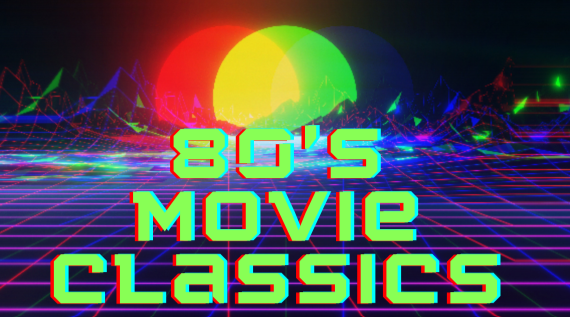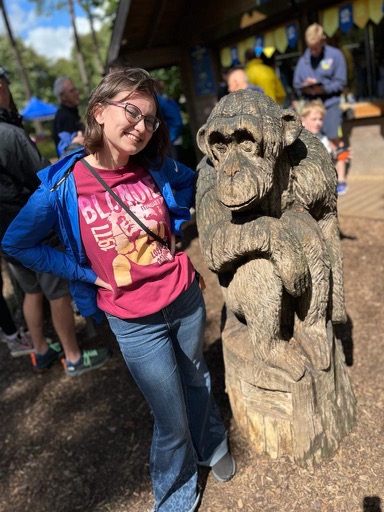Generations Collide Through Cinema
Coronavirus Creates Bridge Between Students And Cinematic Classics

Cinematic classics shared between generations during COVID-19 quarantine.
October 19, 2020
From questions about flip phones to wildly inappropriate jokes, the ways teens and their parents experience the 80’s and 90’s classics are completely different. Add quarantine into the mix and you end up with some confusing family time. But what makes it so different?
One factor that keeps our teachers coming back for more is nostalgia, memories surrounding watching films for the first time are strong. Even if teachers do not want to go back to the 80’s themselves, it is hard not to want to relive your childhood at least a little bit.
“I went to see ET with my dad, and I remember that vividly. I must have been three or four, depending on what month it came out,” Social Studies teacher Mr. Jeffrey Childers reminisced. “We went to see it in the movie theater at the mall. We went to Woolworths afterward and he bought me an ET toy. It was a hard, plastic thing you pull a string and it says “Phone home” and “Elliot” and several other things.”
In the face of such fond memories, it is hard to look at these movies with an objective eye, which can give teens an advantage in understanding what makes these movies tick. It can also make teachers have a more warped perception of these movies. Part of the reminiscing teachers do is related to missing the 80’s themselves, some people even think they were a better time.
This is, of course, not exclusive to the ’80s. Every generation will end up feeling like this at some point in their lives. People want to be able to relive their high school experience, to relive the small things, a casual VHS tape or a toy they haven’t seen in twenty years. Nostalgia contributes massively to why these movies remain popular today, especially, if you consider that many parents share these movies with their children, which causes another generation to associate these films with happy childhood moments.
Nostalgia may have its place in trying to explain why these movies are still so popular, but it is certainly not the only factor. Most of these films were well cast, have solid scripts, and were well shot. They were good, solid movies. But there were plenty of other movies just like them that did not make it big. Maybe these movies just had the “it” factor, either way, they were magical in a way that makes them fun and quotable even today.
“Inherently, all high school movies are more or less the same,” English and Theater teacher Mrs. Julie Gardieff says. “They are all coming of age stories; people make discoveries about themselves and grow up in the process and learn a lesson. It transcends technology and time period.” The theme is what keeps teens coming back, even if these movies were made for a different time.
Not to mention that a variety of these films were produced for a teenage audience. The teen experience from thirty, forty years ago was not that different. Technology has changed, clothes are different, but there is a universal high school experience that is still relatable for almost everyone.
“I’d be very surprised if any teenage boy could not relate to Back to the Future,” Childers says. “Back to the Future is very much from a teenage boy’s perspective.” There are definitely tons of stereotypes and aspects of teen life not dependent on the time period, things that still make sense in the context of today.

It is inevitable that at some point in a discussion regarding 80’s and 90’s movies that political correctness would come up. It is a difficult topic to discuss with any objectivity, but there are two schools of thought regarding political correctness and these classics.
The first is that these films should be changed: if these movies are delivered to a modern audience, they should be held to a modern standard. People who believe in this school of thought say that these films being politically correct at the time of their release is not an excuse to ignore their political incorrectness now.
The other is that if these movies were acceptable at the time then they should be acceptable now, that they should be viewed through the lens of their own time. Some viewers argue that since these movies are snapshots of a different time, we should not expect them to fit in with modern standards.
Regardless of how you feel about this argument, one thing is indisputable – these movies are not always politically correct.
Sixteen Candles is very guilty of this. One character in the film, Chinese exchange student Long Duk Dong, was originally meant to serve as comic relief, but soon devolved into nothing more than a stereotype.
“The jokes were funny and there is a line that I don’t think they crossed,” freshman Jesse Borrero says. “As long as the person they were making fun of was okay with being the butt of all the jokes.”
Other students did not share the same opinion. “I think that would bother me because I feel like there’s so much more to a person than just their race,” junior Ayonna Black said.
Long Duk Dong was a massive stereotype, but he was also a product of his time. Sixteen Candles was released well over 30 years when the scope of what was politically correct was different.
The biggest difference between movies from the ’80s and ’90s and today is obviously the time they are set – obviously – so even though some parts of these movies may still be relatable today there’s bound to be some sort of disconnect.
“In clueless cell phones existed but they were not these teeny-tiny mini-computers in our hands,” Julie Gardieff said. “They were basically flip phones.”
Another thing teenagers contend with today that was not something teachers had in their lives in the ’80s and ’90s is social media. Social media can be an excellent way to connect with many people from many different places at once, but it affects relationships between teens too. The relationship between Forrest and Jenny from Forrest Gump may be less relatable for teens because of their mode of communication.
“Teens don’t have that they don’t have that downtime, or the amount of alone time with one friend,” art teacher Ms. Kerri Murphy explains. “They’re constantly connected to so many options that they’re all over the place. They don’t really have that time to grow.”
This can allow students to maintain relationships with people from all over the world. For some, this may make it harder to bond with others in person or develop long-lasting and more emotionally intimate relationships. Due to this, some friendships in older movies may not be as relatable for teens today.
The importance of technology in how we experience the 80’s and 90’s movies goes way beyond nostalgia, it is also about how technology has changed the way we live. Movies today naturally take this into account, but 80’s and 90’s movies might be missing these small nuances in communication today. 80’s and 90’s movies are interpreted differently by everyone, but what generation you are from plays a major role in shaping that interpretation.


